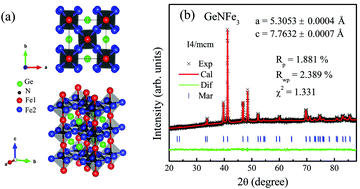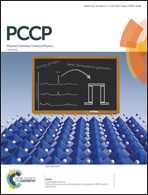Critical behavior in tetragonal antiperovskite GeNFe3 with a frustrated ferromagnetic state
Abstract
Tetragonal GeNFe3 has a second-order ferromagnetic (FM) to paramagnetic transition at 76 K. Our integrated investigations indicate that the ground FM state is frustrated and the tetragonal symmetry is retained below 550 K based on the results of variable temperature X-ray diffraction. Critical behavior was analyzed by a systematic bulk magnetization study. The estimated critical exponents by three different methods (modified Arrott plot, the Kouvel–Fisher method, and critical isotherm analysis) conformably suggest that long-range magnetic coupling described by mean-field (MF) theoretical model is dominant in GeNFe3. The experimental M–T–H data collapse into two independent branches according to the scaling equations m = f±(h) with the renormalized magnetization m = ε−βM(H, ε) and the magnetic field h = Hε−(β+γ). The exchange distance is estimated as J(r) ∼ r−4.8 on the basis of the β and γ values, which lies between the long-range MF model (r−4.5) and the short-range 3D Heisenberg (3DH) model (r−5). Our results indicate that the competition between local magnetic moments of iron 3d electronic state and itinerant covalent interactions of N–Fe bonds should be responsible for critical behavior in this system.



 Please wait while we load your content...
Please wait while we load your content...